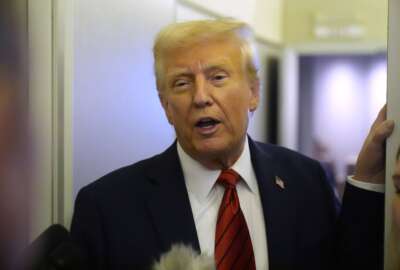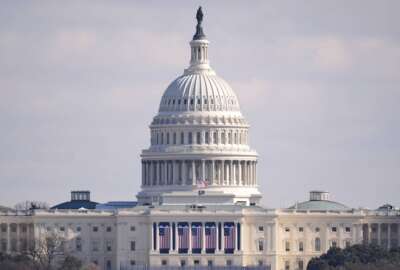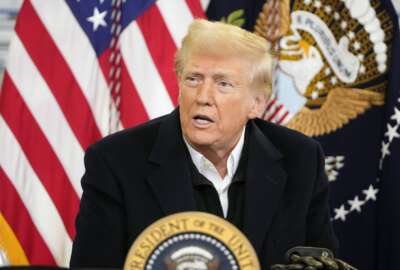Sequestration Q&A: Who are the DoD civilians exempted from furloughs?
Furloughs for some 650,000 Defense Department civilian employees kicked in last week.Still, about 15 percent of the civilian workforce is exempt from furloughs. In...
wfedstaff | April 17, 2015 5:15 pm
Furloughs for some 650,000 Defense Department civilian employees kicked in last week, with about 85 percent of the Pentagon’s civilian workforce forced to take one day off per week without pay through Sept. 30.
A “unified, consistent approach” drove the thinking of top Pentagon leaders, said Pat Tamburrino, chief of staff to the Undersecretary of Defense for Personnel and Readiness, in an interview on In Depth with Francis Rose (Federal News Radio DoD Reporter Jared Serbu guest-hosted).

Just how consistent were the furloughs? Tamburrino, a member of the Senior Executive Service responsible for overseeing the day-to-day operations of Personnel and Readiness, was, himself furloughed last week.
“Consistency did not stop at a particular level of the workforce,” he said. “It went from the entirety of the workforce.”
Still, about 15 percent of the civilian workforce is exempt from furloughs, including certain employees providing safety and security on military bases, Wounded Warrior caregivers and mental-health professionals.
In this Q&A, Tamburrino discusses the DoD decision-making behind some of the furloughs and other civilian exempted from the forced days off.
QIn a letter to lawmakers last week, Undersecretary of Defense and Comptroller Robert Hale confirmed to lawmakers that the Pentagon was made to furlough civilians paid out of working-capital funds. Why was the decision made to furlough working-capital fund employees?
A “The decision to furlough working capital fund folks goes back the idea of doing this in an equitable and consistent manner across the government. So, the working-capital fund folks are paid for out of appropriated funds. And sequestration affected all the appropriated funds — again a lot of O&M but not exclusively O&M. So, the fact that appropriated funds were going down, the fact that the customers who supply the working-capital fund people will have less money to spend, those people are now subject to furlough.”
QThose working-capital fund employees are distinct, separate and apart from people who are paid through non-appropriated fund employees. Can you explain that distinction?
A “The non-appropriated fund employees, the reason they’re excepted from furlough, is to reduce that money does not help our sequestration problem at all because it’s non-appropriated, and the sequestration hit is against the appropriated fund employees. [Non-appropriated fund employees are] about 130,000 employees, they’re principally employed in morale, welfare and recreation activities worldwide. They’re self-sustaining and further they do not operate over the same OPM personnel rules as the rest of the federal workforce. So essentially they are an entity unto themselves and adjusting that doesn’t help us address the sequestration problem.”
Q What is happening with civilian employees at the Defense Department Office of the Inspector General?
A “The DoD IG was excepted from furlough because the DoD IG operates under a separate statutorily mandated mission, the Inspector General Act of 1978. They have a unique mission — it’s statutorily driven and it’s in a separate line item in the DoD budget. So, it is essentially an organization inside DoD, but it is its own entity. So therefore, based on a thorough examination of that set of facts, they were excepted.”
Q About two weeks ago, Stars and Stripes reported that German civilians working for the U.S. military were not only excepted from furloughs but are also on track to receive a pay raise. Is this true?
A “So, on both accounts, foreign nationals — as a general proposition — are excepted from furlough, because they are all subject to Status of Forces agreements, which are unique to the country that they’re employed in. So, you can imagine to go through dozens of those individually and try to figure out the puts-and-takes — probably not very practical. So they were put off the table.
“In terms of the German issue … As part of the general negotiations with them we do every year — it’s called a tariff agreement — the German nationals did ask for a significant pay raise. At the end of the day, the pay raise will be approximately 1 percent, which is the same pay raise that the President has proposed for all civilian employees.”
(Federal News Radio’s Jared Serbu, Jack Moore and intern Cogan Schneier contributed to this report)
Copyright © 2025 Federal News Network. All rights reserved. This website is not intended for users located within the European Economic Area.





